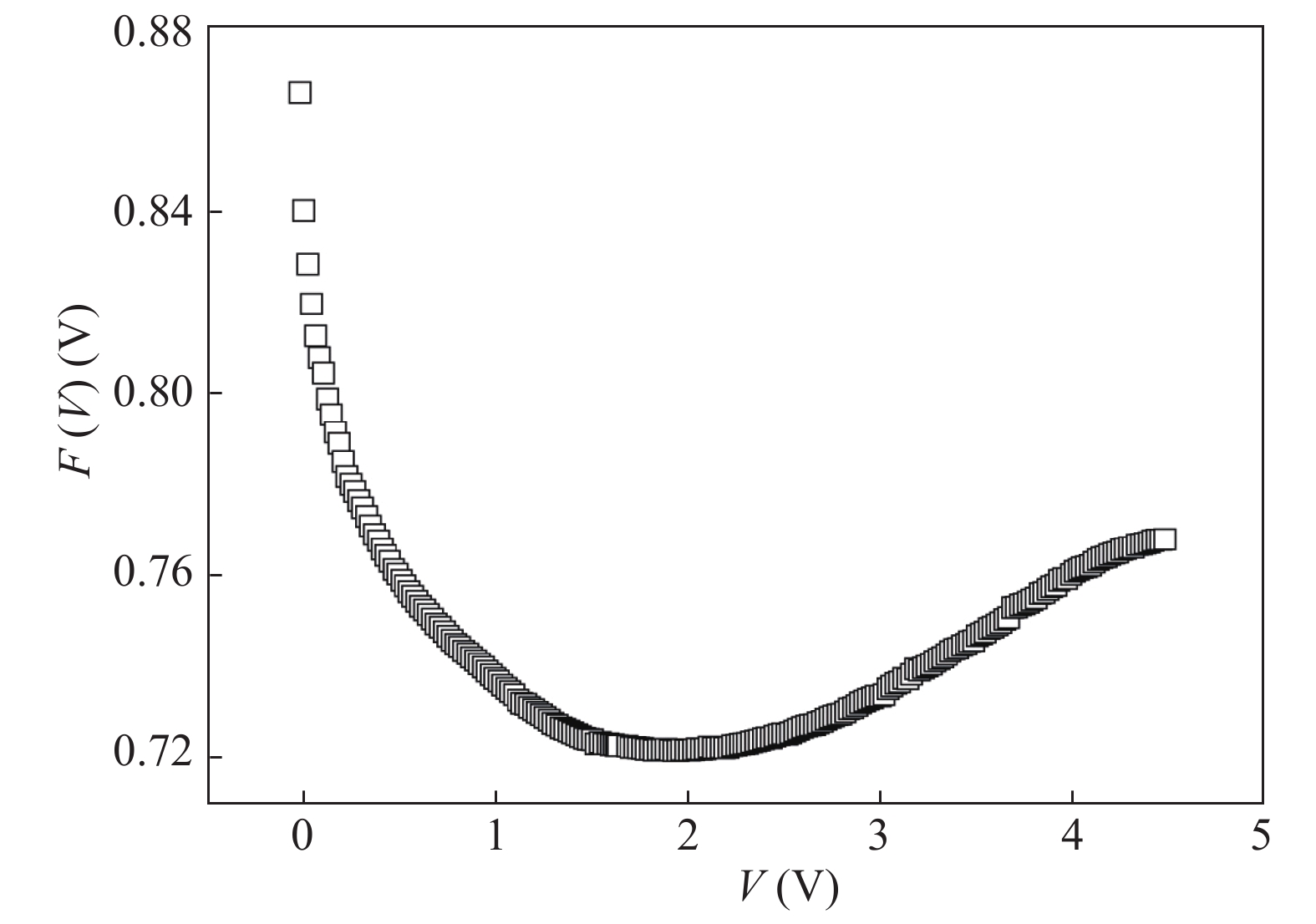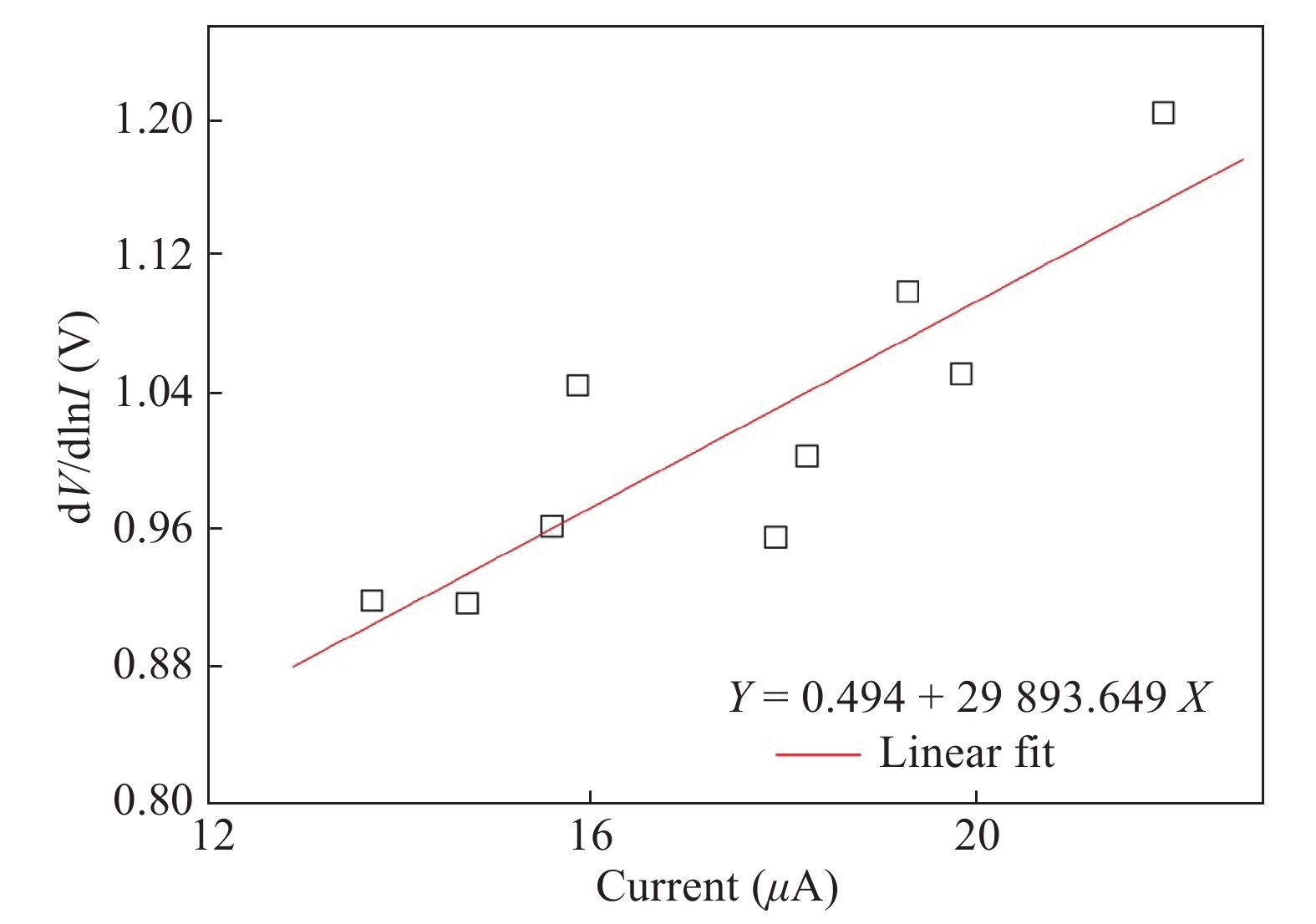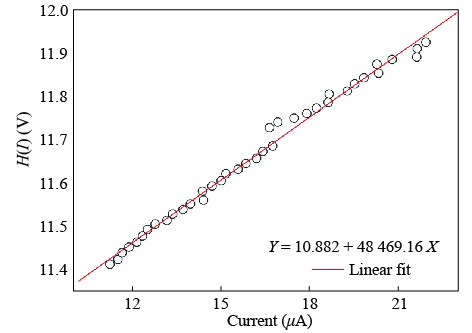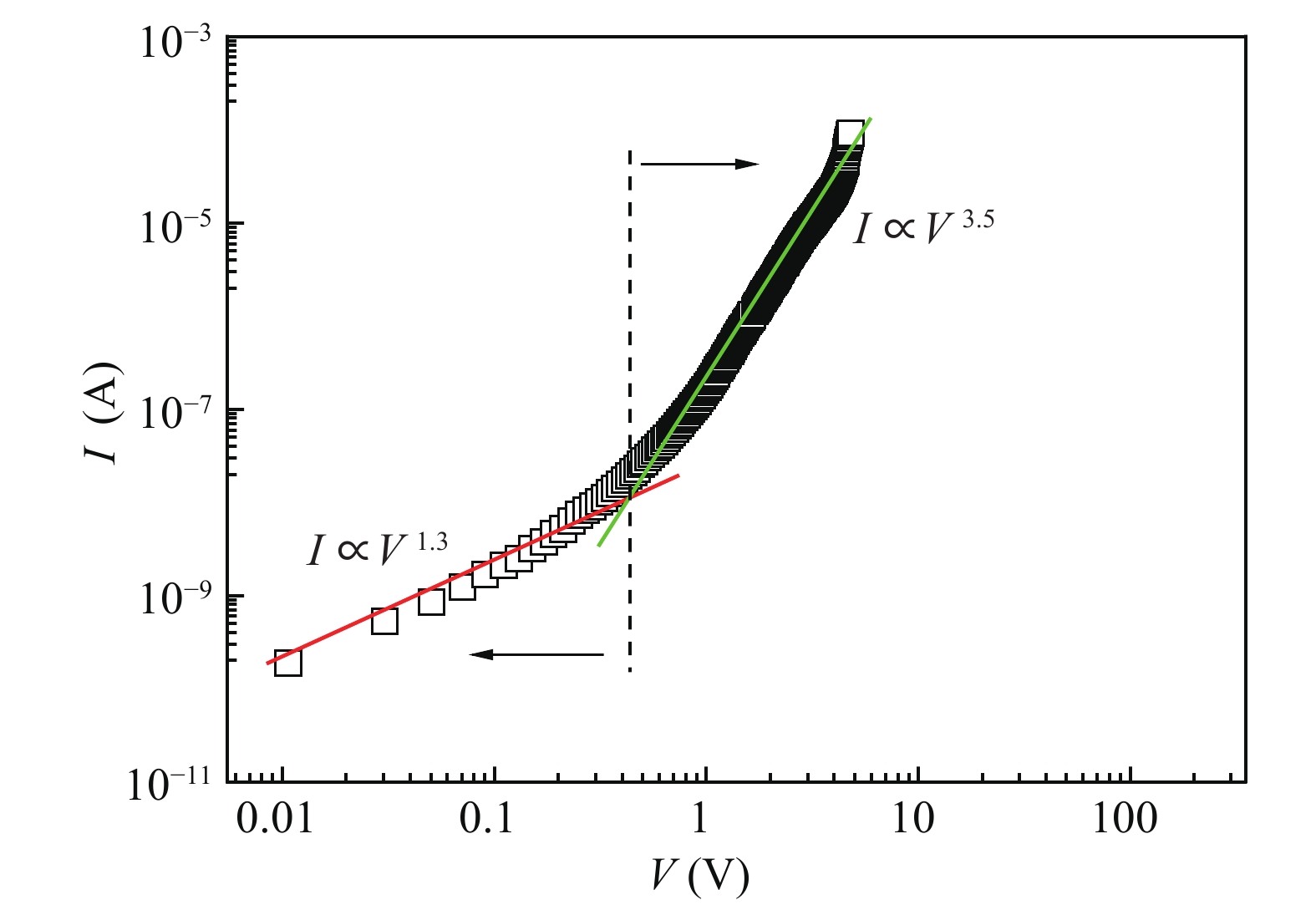| Citation: |
H. Mokhtari, M. Benhaliliba. Organic–inorganic Au/PVP/ZnO/Si/Al semiconductor heterojunction characteristics[J]. Journal of Semiconductors, 2017, 38(11): 116001. doi: 10.1088/1674-4926/38/11/116001
****
H. Mokhtari, M. Benhaliliba. Organic–inorganic Au/PVP/ZnO/Si/Al semiconductor heterojunction characteristics[J]. J. Semicond., 2017, 38(11): 116001. doi: 10.1088/1674-4926/38/11/116001.
|
Organic–inorganic Au/PVP/ZnO/Si/Al semiconductor heterojunction characteristics
DOI: 10.1088/1674-4926/38/11/116001
More Information
-
Abstract
The paper reports the fabrication and characterization of a novel Au/PVP/ZnO/Si/Al semiconductor heterojunction (HJ) diode. Both inorganic n type ZnO and organic polyvinyl pyrrolidone (PVP) layers have grown by sol–gel spin-coating route at 2000 rpm. The front and back metallic contacts are thermally evaporated in a vacuum at pressure of 10-6 Torr having a diameter of 1.5 mm and a thickness of 250 nm. The detailed analysis of the forward and reverse bias current-voltage characteristics has been provided. Consequently, many electronic parameters, such as ideality factor, rectification coefficient, carrier concentration, series resistance, are then extracted. Based upon our results a non-ideal diode behavior is revealed and ideality factor exceeds the unity (n > 4). A high rectifying (~4.6 × 10 4) device is demonstrated. According to Cheung-Cheung and Norde calculation models, the barrier height and series resitance are respectively of 0.57 eV and 30 kΩ. Ohmic and space charge limited current (SCLC) conduction mechanisms are demonstrated. Such devices will find applications as solar cell, photodiode and photoconductor. -
References
[1] Kumar K N, Saijyothi K, Kang M, et al. Improved electrical properties of Fe nanofiller impregnated PEO + PVP:Li+ blended polymer electrolytes for lithium battery applications. Appl Phys A, 2016, 122: 698 doi: 10.1007/s00339-016-0212-7[2] Bahari A, Babaeipour M, Soltani B. Theoretical investigation of quantum tunneling and self- energy phenomena in Al2O3/ PVP nanocomposites. J Mater Sci, 2016, 27: 2131[3] Reddy M S P, Sreenu K, Reddy V R, et al. Modified electrical properties and transport mechanism of Ti/p-InP Schottky structure with a polyvinylpyrrolidone (PVP) polymer interlayer. J Mater Sci, 2017, 28: 4847[4] Imer A G, Ocak Y S. Effect of light intensity and temperature on the current voltage characteristics of Al/SY/p-Si organic-inorganic hetero-junction. J Electron Mater, 2016, 45: 5347 doi: 10.1007/s11664-016-4649-4[5] Benhaliliba M, Ocak Y S, Mokhtari H, et al. Synthesis and properties of Au/PVP/p-Si/Al heterojunction diode. 2014 North African Workshop on Dielectric Materials for Photovoltaic Systems, 2014[6] Yakuphanoglu F. Current transport mechanism of heterojunction diodes based on the reduced graphene oxide-based polymer composite and n-type Si. J Alloys Compd, 2010, 494: 451 doi: 10.1016/j.jallcom.2010.01.075[7] Aydin M E, Yakuphanoglu F. Temperature dependent electrical transport in Al/Poly(4-vinyl phenol)/p-GaAs metal–oxide–semiconductor by sol–gel spin coating method. Microelectron Eng, 2008, 85: 1836 doi: 10.1016/j.mee.2008.05.031[8] Benhaliliba M. The photovoltaic properties of a good rectifying Al/n-ZnO/p-Si/Al Schottky diode used in solar cell. J Fundam Appl Sci, 2017, 9: 605 doi: 10.4314/jfas.v9i1.35[9] Missoum I, Ocak Y S, Benhaliliba M, et al. Microelectronic properties of organic Schottky diodes based on MgPc for solar cell applications. Synth Met, 2016, 214: 76 doi: 10.1016/j.synthmet.2016.01.004[10] Marıl E, Kaya A, Çetinkaya H G, et al. On the temperature dependent forward bias current-voltage (I-V) characteristics in Au/2% graphene-cobalt doped (Ca3Co4Ga0.001Ox)/n-Si structure. Mater Sci Semicond Process, 2015, 39: 332 doi: 10.1016/j.mssp.2015.05.029[11] Norde H. A modified forward IV plot for Schottky diodes with high series resistance. J Appl Phys, 1979, 50: 5052 doi: 10.1063/1.325607[12] Benhaliliba M. The barrier height and the series resistance of Ag/SnO2/Si/Au Schottky diode determined by Cheung and Lien methods. J New Technol Mater, 2015, 5: 24 doi: 10.12816/0019429[13] Aydogan S, Cınar K, Asil H, et al. Electrical characterization of Au/ZnO thin film Schottky diode on silicon substrate. J Alloys Compd, 2009, 476: 913 doi: 10.1016/j.jallcom.2008.09.131[14] Rhoderick E H, Williams R H. Metal–semiconductor contacts. 2nd ed. Oxford: Clarendon, 1988[15] Cheung S K, Cheung N W. Extraction of Schottky diode parameters from forward current–voltage characteristics. Appl Phys Lett, 1986, 49: 85 doi: 10.1063/1.97359[16] Missoum I, Benhaliliba M, Chaker A, et al. A novel device behavior of Ag/MgPc/n-GaAs/Au-Ge organic based Schottky diode. Synth Met, 2015, 207: 42 doi: 10.1016/j.synthmet.2015.05.027[17] Gedikpınar M, Cavas M, Zayed Alahmed A, et al. Electronic properties of Al/p-Si/C70/Au MIS-type diode. Superlattices Microstruct, 2013, 59: 123. doi: 10.1016/j.spmi.2013.03.028[18] Karataş Ş. Effect of series resistance on the electrical characteristics and interface state energy distributions of Sn/p-Si (MS) Schottky diodes. Microelectron Eng, 2010, 87: 1935. doi: 10.1016/j.mee.2009.11.168[19] Karataş Ş, Yakuphanoglu F. The novel transparent sputtered p-type CuO thin films and Ag/p-CuO/nSi diodes. Mater Chem Phys, 2013, 138: 72 doi: 10.1016/j.matchemphys.2012.10.038 -
Proportional views





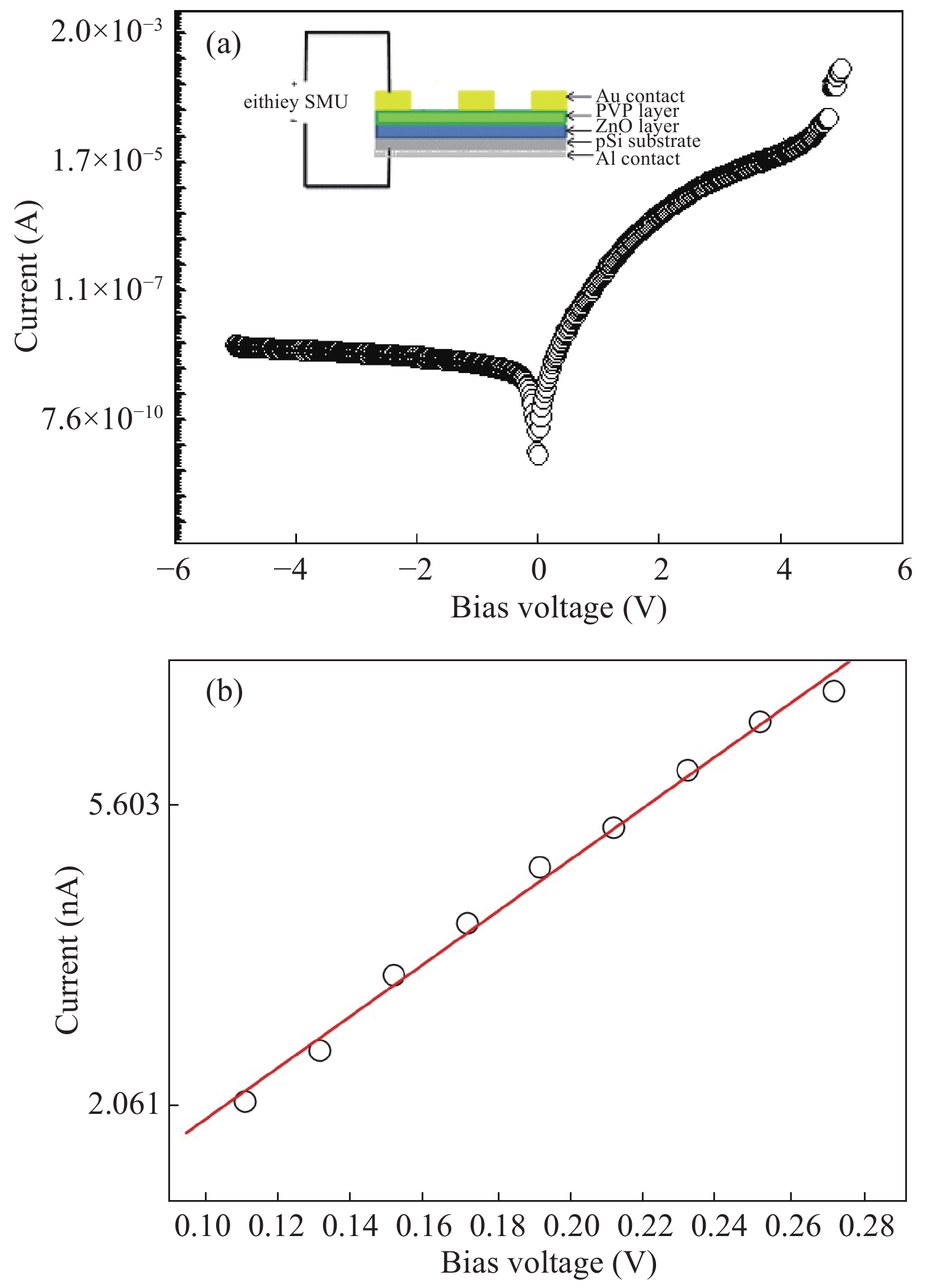
 DownLoad:
DownLoad:
